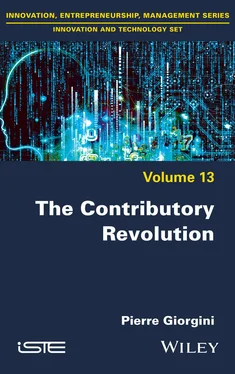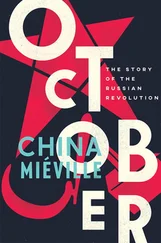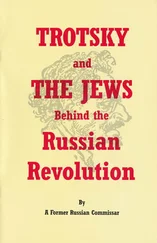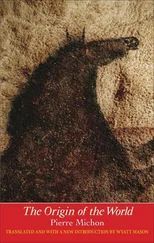The requirement for efficiency of the technical system reduces the human driver to a singular inability to intervene in the global process. It is in the name of collective and individual safety that this is done and can therefore be considered globally positive. It can already be noted that the ongoing extension of this standardization through technology, in the name of the general interest in all areas of life, is leading us towards forms of dictatorship of the general interest. We will describe these generalizable concepts as exo-distributive. “Exo” because the intelligence is exogenous to the vehicle system and “distributive” because orders are distributed from top to bottom after centralized collection of data from bottom to top.
Let us now imagine that there is no central intelligence but that each vehicle has its own intelligence and therefore decision-making capacity, combined with that of the human being who can choose between three options: autopilot, assisted driving or full human control. In the latter case we have returned – in the case of the car plus driver system – to an exo-distributive approach. Indeed, EXD- or ENC-type systems can be entwined, and depend on the scale of the system. In contrast, for the overall system, the intelligence is distributed within the system itself. We are in another conception of this system which I will qualify as endo-contributive. “Endo” because the intelligence is endogenous to the system, and “contributive” because each element of the system contributes to the realization of the whole, while limiting purely exo-distributive external interventions to situations where their global added value is indisputable. We can see in this example that the nature of the ENC or EXD conception can depend on the scale at which the observer is located.
In this case, it can be noted that a hybridization of the two models can enhance their performance. For example, a central intelligence that regulates traffic and optimizes the speed of each vehicle to avoid a future traffic jam, or suggests a change of route following a traffic optimization operation that shared intelligence cannot perform even in a network. At this stage, there is therefore no value judgment on a particular system. The structure remains corpuscular in both cases; the cars are conceived as stable and autonomous entities. From a functional point of view, the conceptions can be endo-contributive or exo-distributive.
According to Maël Montévil, it would be a very exciting (ex)organology research program to make a typology of ENC and EXD instances in different organizations.
1.1.3. The collective intelligence of working groups
Let us imagine a group of 12 people working in sub-groups, where each sub-group and each individual within the sub-group has a particular, well-identified function. We will define “group intelligence” as the ability to understand how the group works, the roles of the actors, the rules of cooperation and to intervene in it to modify its dynamics. Let us assume that this group intelligence is external to the group, i.e. entrusted to a “project manager” who has the power to intervene as they wish, according to their analyses and decisions. They are the only one to grasp the project as a whole and to control the dynamics of the group as a whole in order to lead it towards success, to supervise it. They oversee the group and are the only one with a global vision of it. They will then assign tasks to the different sub-groups and individuals, regulate interdependencies, modify the rules according to the progress of the work, arbitrate regarding the ideas to be maintained or the paths to be abandoned. They will distribute instructions according to their perception of progress, possibly modifying the sub-groups. This is an exo-distributive typology. Intelligence thinks of itself as the master of the game and what is not under control comes either from a lack of observation or from a lack of modeling or understanding.
Let us now imagine a group of 12 people without a leader, without external coordination, left to its own collective intelligence and where the technical systems allow each person to be in contact with the 11 others to produce a shared vision of what is being created collectively (holoptism). Everything is transparent and visible to all. The intelligence is then distributed and internal to the group, the rule being that no member of the group can take the leadership role. These are models tested in co-design, for example, or observed in animal ethology within starling clouds where there is no “squadron leader”. In this case, intelligence will be endo-contributive. Alliances within the group can be made and broken as the ongoing problem solving progresses. The “membranes” dividing the work groupings will be ephemeral, unlike the first model. They will be temporary alliances and not sub-groups with specific missions throughout the process. The solution will not be premeditated. It will be the result of co-contributory co-development. Individual representations, emotions and sensitivities will not be discounted or categorized by external intelligence; instead they will be internalized in the co-creative process itself because they are borne by each individual in their behavior and their analysis of the group.
The success strategy will be co-developed as it progresses. Each person will have to take into account that the only way for them to positively contribute to the collective success comes from the way in which, over time, they transform their own relationship to the other, to the others. They will not be able to “transform” the other by obtaining arbitration from outside.
To understand this even better, let us imagine 36 people standing, randomly distributed in a rectangular room. Each person randomly chooses two other people to whom they decide to connect mentally without announcing it. One person can therefore be chosen several times. The problem to be solved is to move each person so that when completed, each person is at the tip of an isosceles triangle with the two people they have chosen. In an exo-distributive approach, a mathematician draws a rectangle with 36 points, draws at random for each point, two points out of 35, and builds an algorithm that solves the problem, i.e. calculates the positions (x,y) that must be applied to each point to build the ideal figure. People become points and are therefore reduced to their x and y coordinates. Not taken into account in this case is the affinity, the emotional or intuitive influence that real people experience when choosing the two associates, even though they are supposed to do it randomly. This constitutes the first approximation. However, beyond that, the problem to be solved is eminently complex and few mathematicians are able to resolve it.
Experience shows that even “mathematical” minds cannot solve this equation after more than three hours of group work. However, experience also shows that if you ask the 36 people – with their bodies, hearts and heads, emotions and intuitions, once their associates have been chosen – to all move at the same time to reach this target (each at the head of an isosceles triangle with their two associates), everyone moves and after some slight chaos, the group converges towards this collective figure of isosceles triangles, usually in less than two minutes in total. In this case, we are indeed in an endo-contributive conception, the intelligence of the group is distributed and inclusive, and in this particular instance it produces a collective performance that is out of all proportion to the exo-distributive conception. However, we should not conclude that this is true for all “intelligent” activities, nor that this method would always be both possible and more efficient. Indeed, for example, if a single member of the group (stowaway) decides to always move without getting caught, the group never converges. This dissident takes implicit possession of the group, as it were. This is an essential point to which we will return.
Читать дальше












